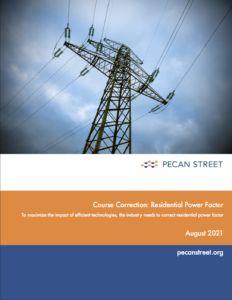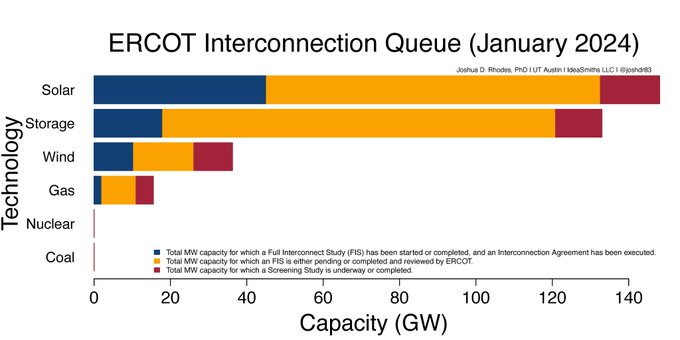August 9, 2021
By Clayton Johnson, Communications Manager, Pecan Street Inc.
Over the past several decades, utilities, building energy managers, and homeowners have been increasingly investing in energy efficiency measures, efficient appliances and rooftop solar. These efforts have saved countless megawatt-hours of energy and millions of tons of greenhouse gas emissions, and the need for these measures are only increasing as we continue to decarbonize the power sector. However, despite this progress, there is an often overlooked but increasingly concerning metric that is preventing the industry from maximizing residential sector energy efficiency investments – total power factor. Or power factor for short, is a measurement for how difficult it is to get power to a building.
 To demonstrate the challenges and opportunities associated with total power factor, we used Pecan Street’s home energy use and PV data to explore the grid impacts of poor residential power factor and the system benefits of power factor correction. The analysis showed that by improving power factor of the homes in our sample, an additional current capacity of 12-16% to the distribution system can be achieved. This savings represents a significant increase in transmission and distribution capacity that would lower energy sector emissions and free up capacity for serving additional customers with existing generation assets – all without upgrading any utility infrastructure.
To demonstrate the challenges and opportunities associated with total power factor, we used Pecan Street’s home energy use and PV data to explore the grid impacts of poor residential power factor and the system benefits of power factor correction. The analysis showed that by improving power factor of the homes in our sample, an additional current capacity of 12-16% to the distribution system can be achieved. This savings represents a significant increase in transmission and distribution capacity that would lower energy sector emissions and free up capacity for serving additional customers with existing generation assets – all without upgrading any utility infrastructure.
The paper, Course Correction: Residential Power Factor is now available on our website.
This analysis explores the changes we’ve seen in residential power factor, why these changes are happening, the problems it poses, and what can be done to improve residential power factor. We also outline strategies for implementing broad scale residential power factor correction technologies. The analysis provides a roadmap for utilities, regulators, and appliance manufacturers for how they can set policy and prioritize new technology adoption that will free up distribution capacity and reduce greenhouse gas emissions.
There are three primary methods to resolve low power factor in homes:
• A whole-home approach: installing power factor correction solutions that have been effective in the commercial and industrial sector at the electric meter interconnection with the home.
• For solar systems only: require that solar or battery storage inverters produce reactive power to meet the home’s total power needs rather than only real power.
• At the device/appliance level: Mandate that devices and appliances meet a minimum power factor of 0.95.
To improve residential power factor at scale, policies, regulations, and utility programs will need to be implemented that enable utilities to analyze and appropriately compensate customers for power factor correction. Some policy recommendations include:
1. Making it law: Introducing it as a portion of a bill and making it part of the Code of Federal Regulations. In this case, the likely enforcement authority would be the FTC, and therefore, compliance would likely be high. Unfortunately, a likely pathway for this may take the form of updating EnergyStar standards, which are not mandatory – you can still buy a non-energy-star version of an appliance.
2. Harmonizing product safety and operations standards with existing IEC standards: This would require standards process through ANSI/UL and would take 2-5 years for standards writing and then the enforcement would happen through local code inspectors. Compliance would be relatively high in areas with strong inspection requirements and low in unincorporated areas of the country without inspections.
3. Requirements set in the National Electric Code: Compliance would be relatively high in areas with strong inspection requirements and low in unincorporated areas of the country without inspections.
Residential power factor may be a growing problem but one that is solvable and has significant benefits for grid operations, utility bottom lines, and emissions reductions. If any of the solutions discussed above were deployed at scale, the improvements in residential power factor would make it easier to integrate more distributed generation, reduce greenhouse gas emissions, and free up distribution capacity to serve more customers with existing infrastructure. These benefits make it clear that utilities, grid operators, regulators, and appliance manufacturers should explore these relatively low-cost, high-yield solutions to create a modern and more efficient grid.
The paper, Course Correction: Residential Power Factor is now available on our website.


















